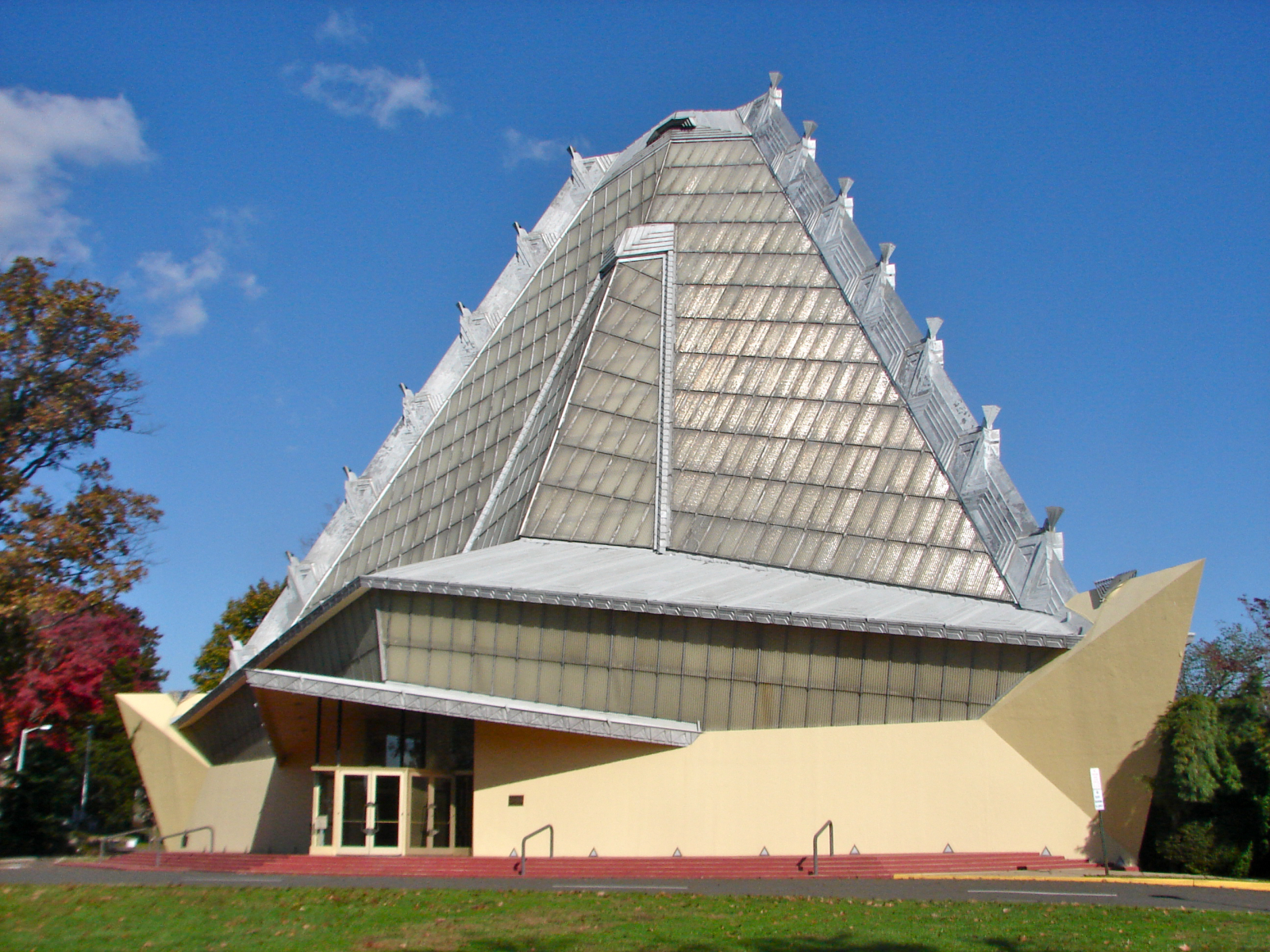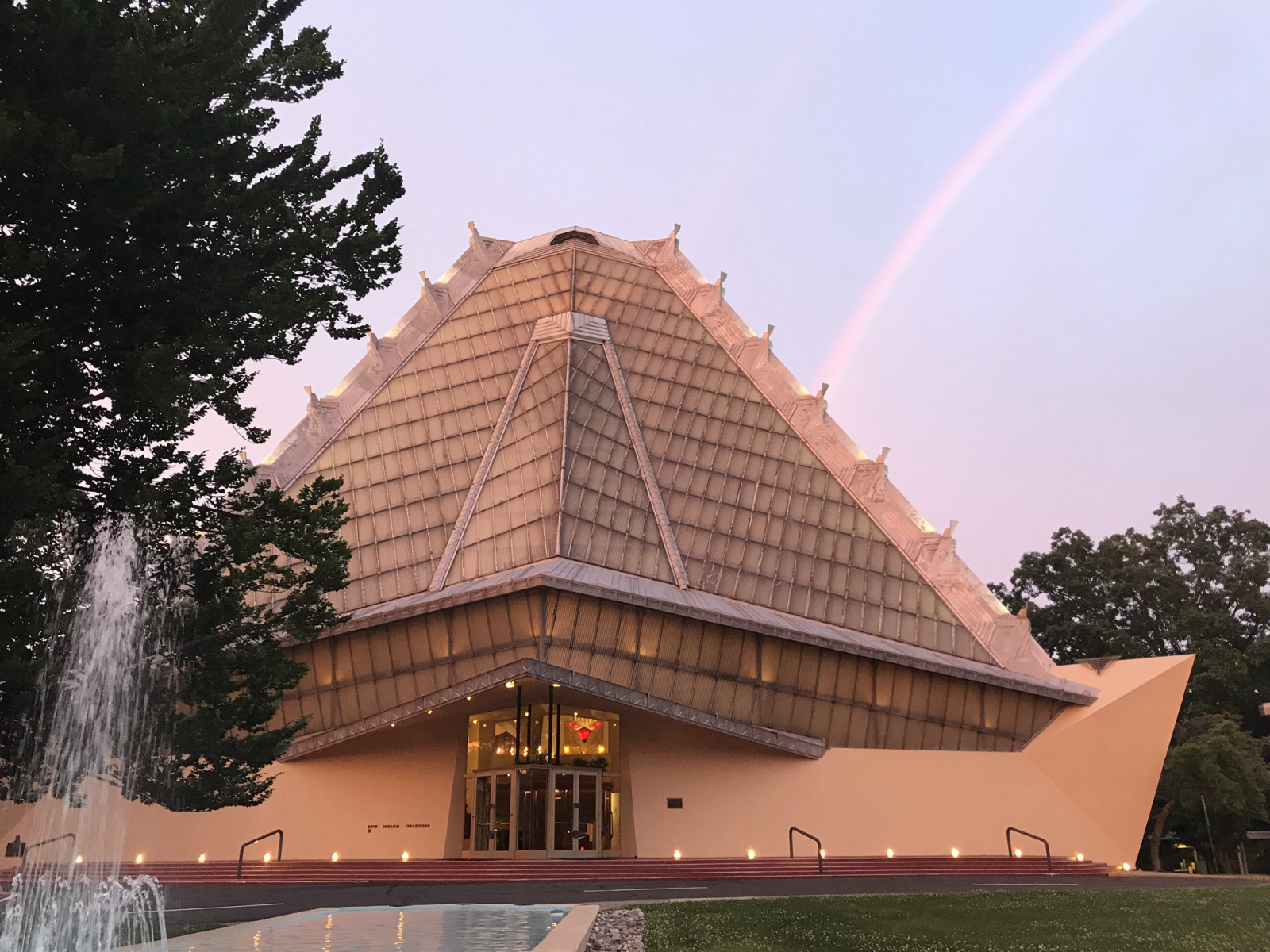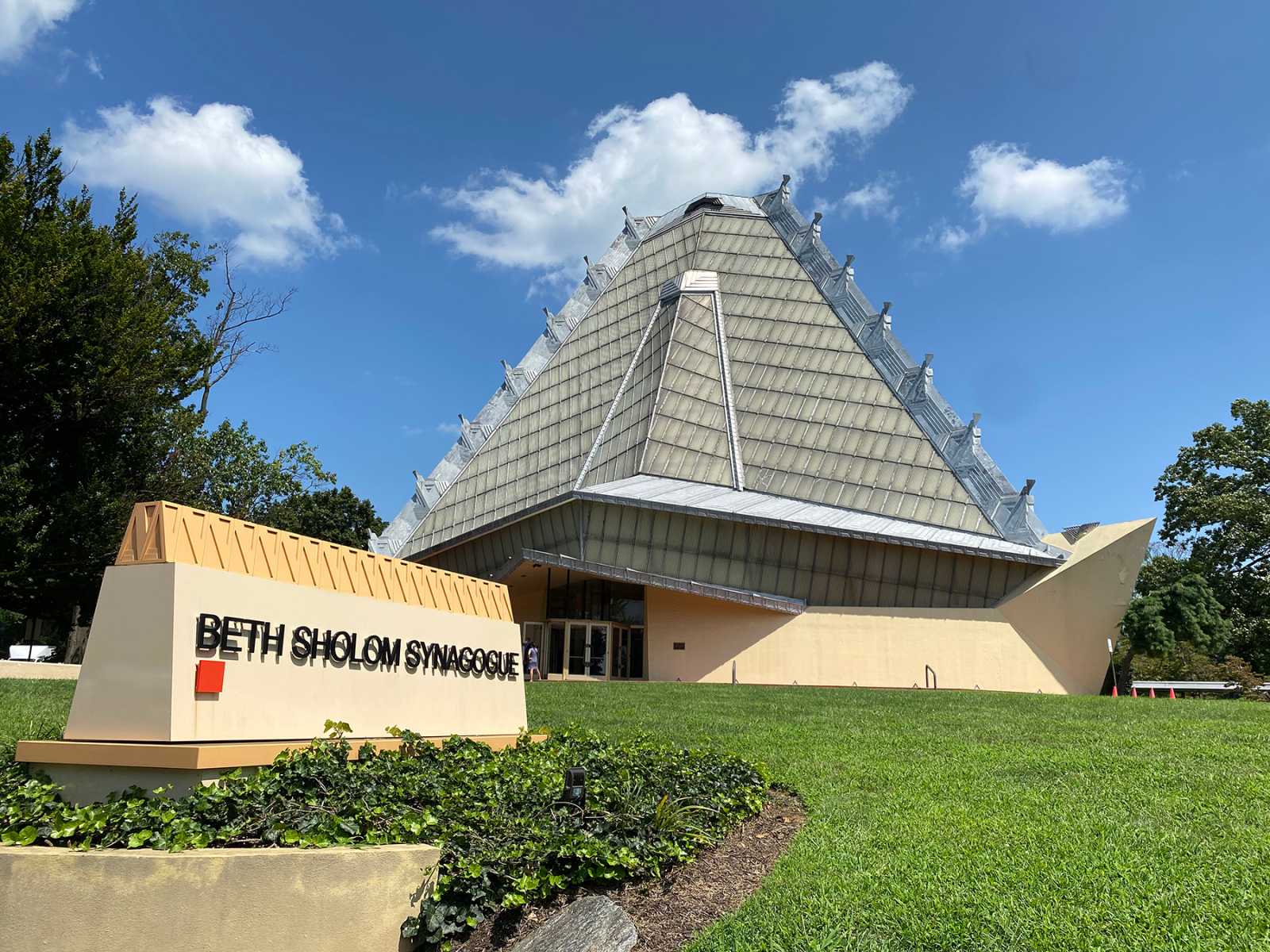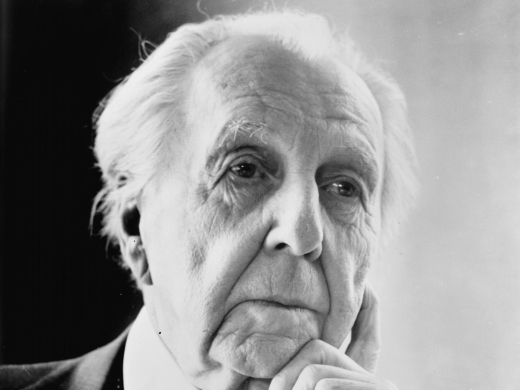Site overview
Beth Sholom Synagogue is nationally significant as one of Frank Lloyd Wright’s most important commissions during his long, productive, and influential career. Constructed between 1954 and 1959, the building is Wright’s only synagogue among a relatively small number of religious commissions. Both a product of its time and place, and symbolically and liturgically grounded in Judaic tradition, the glass pyramid is an unforgettable presence in the suburban Philadelphia landscape, day or night. Its power as a building stemmed from the fruitful collaboration between the famous architect and the congregation’s rabbi, Mortimer J. Cohen. A letter to Cohen accompanying the initial set of plans presented the design to the congregation as a “promised hosanna” and a “coherent statement of worship.” Beth Sholom Synagogue is one of a group of sixteen Wright buildings singled out in 1959 by the American Institute of Architects and the National Trust for Historic Preservation as his most important “to the nation...which ought to be preserved in their original form.” The building remains essentially unchanged and exhibits an unusually high degree of integrity.







